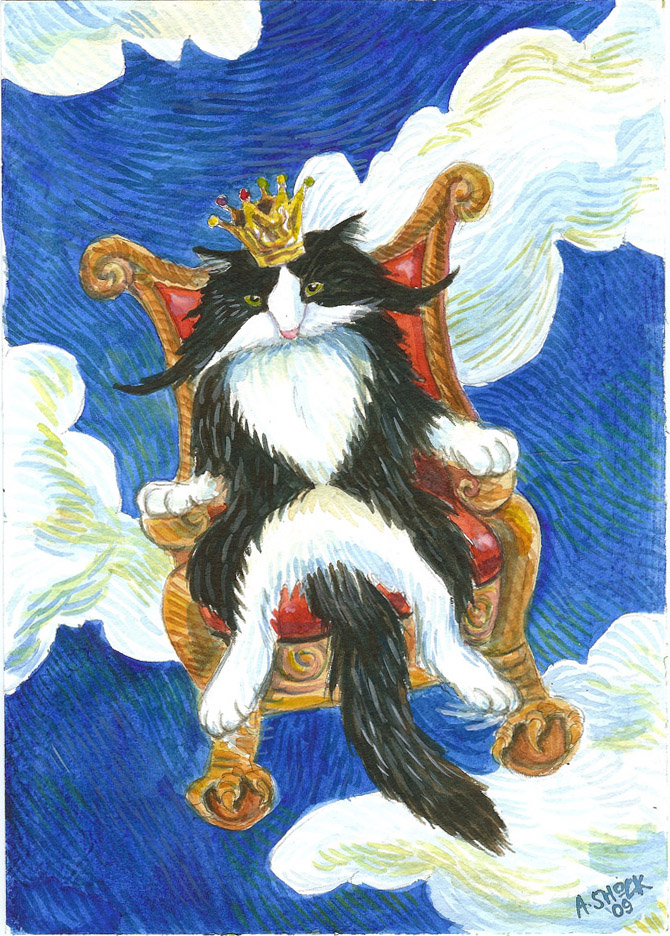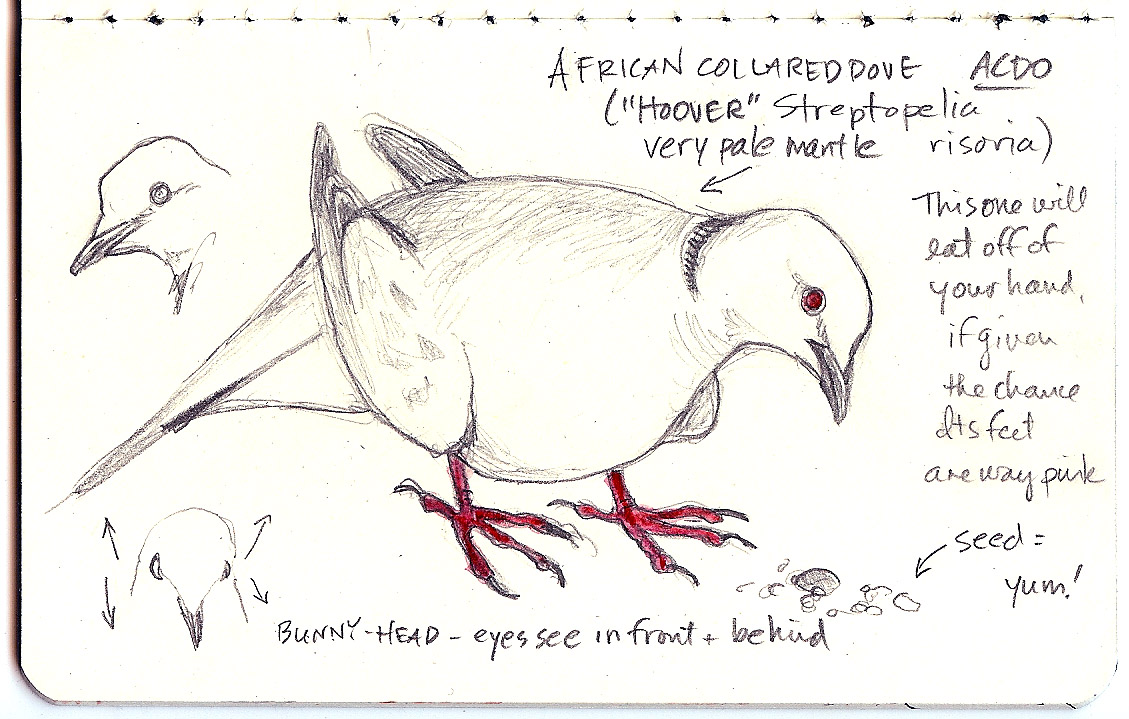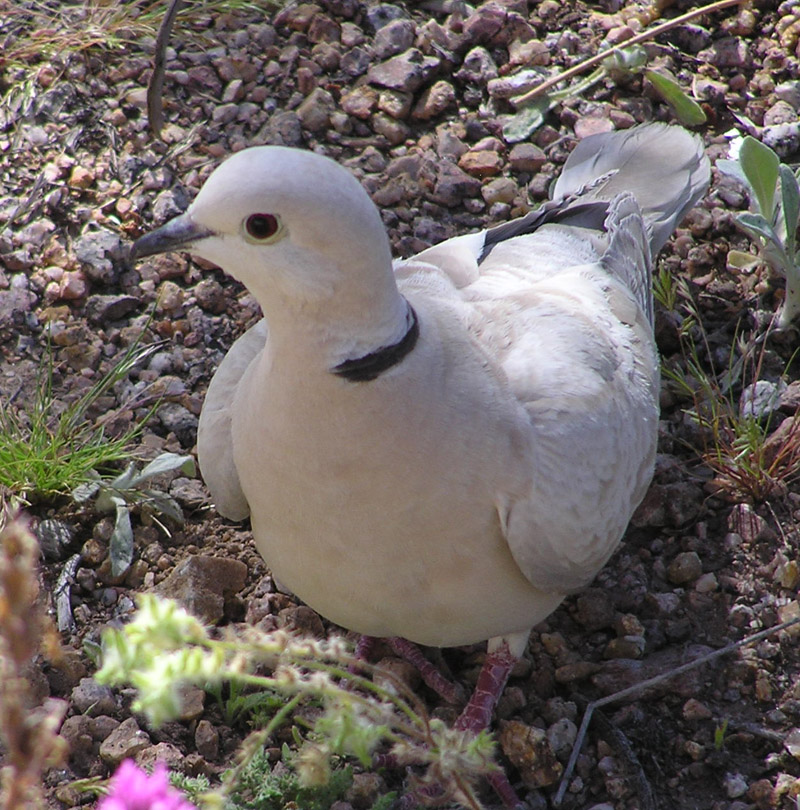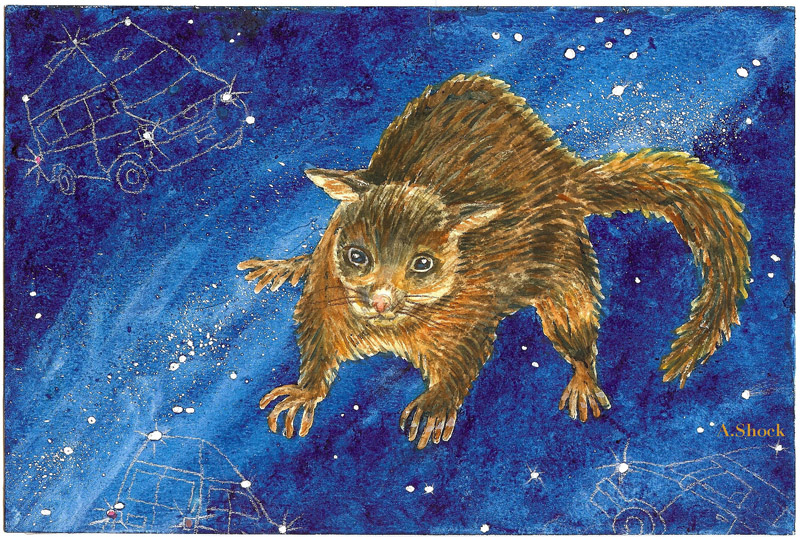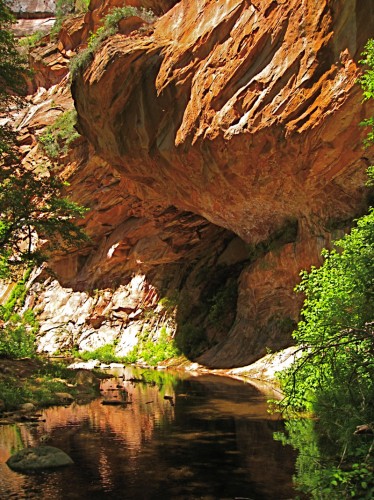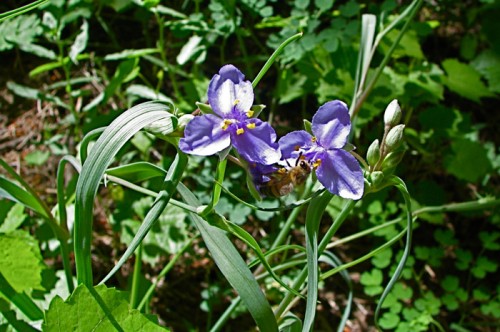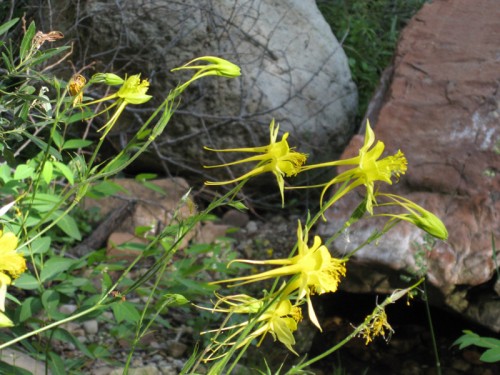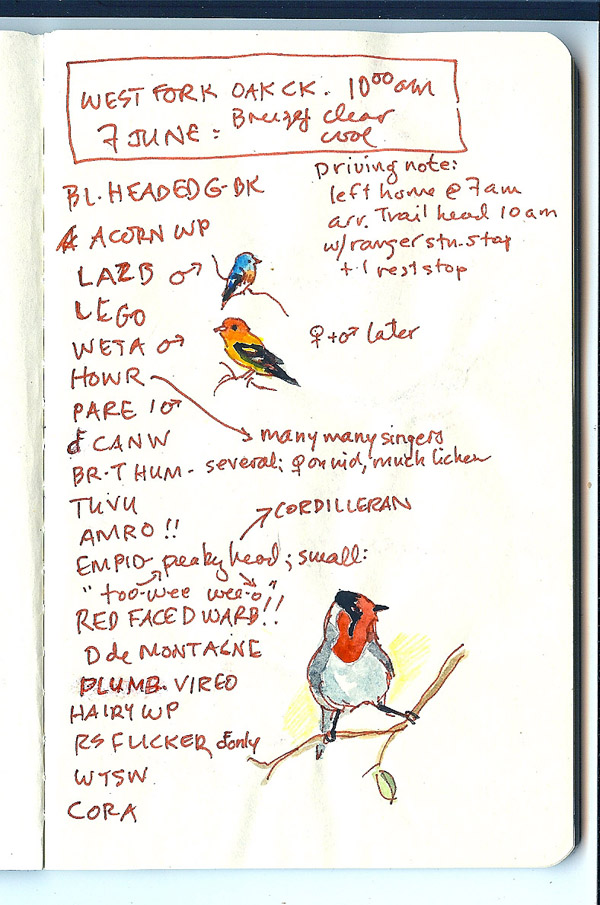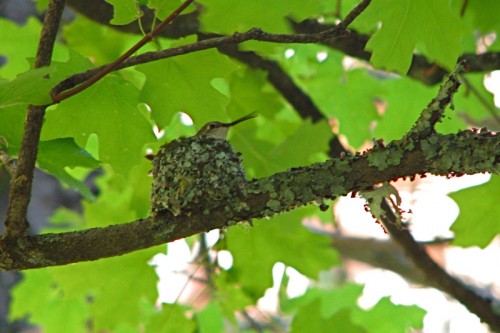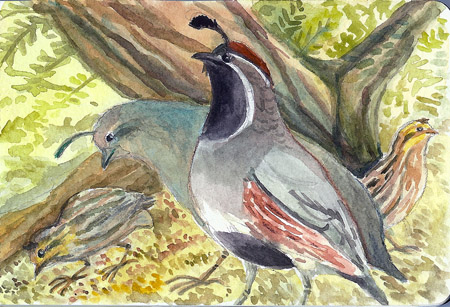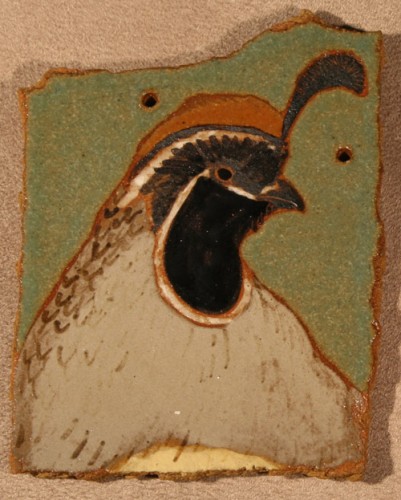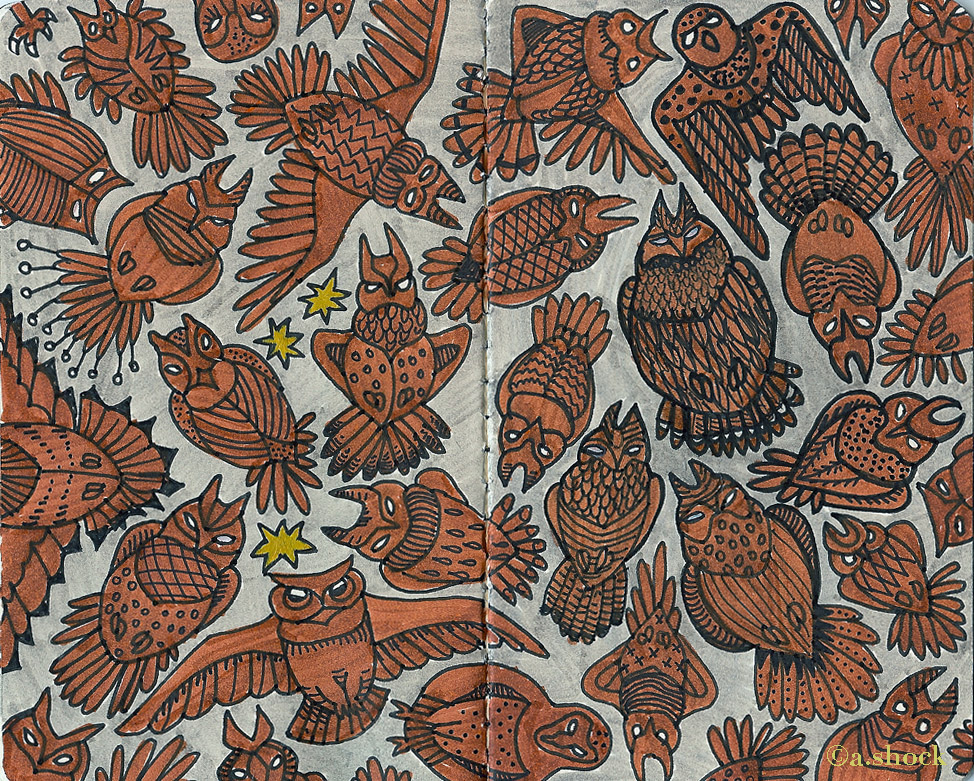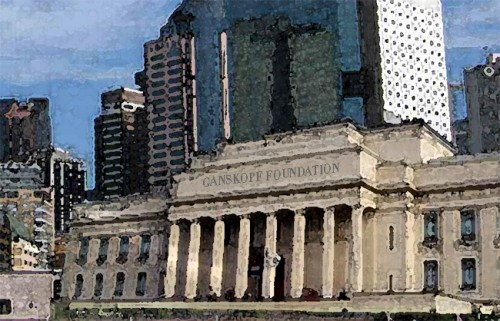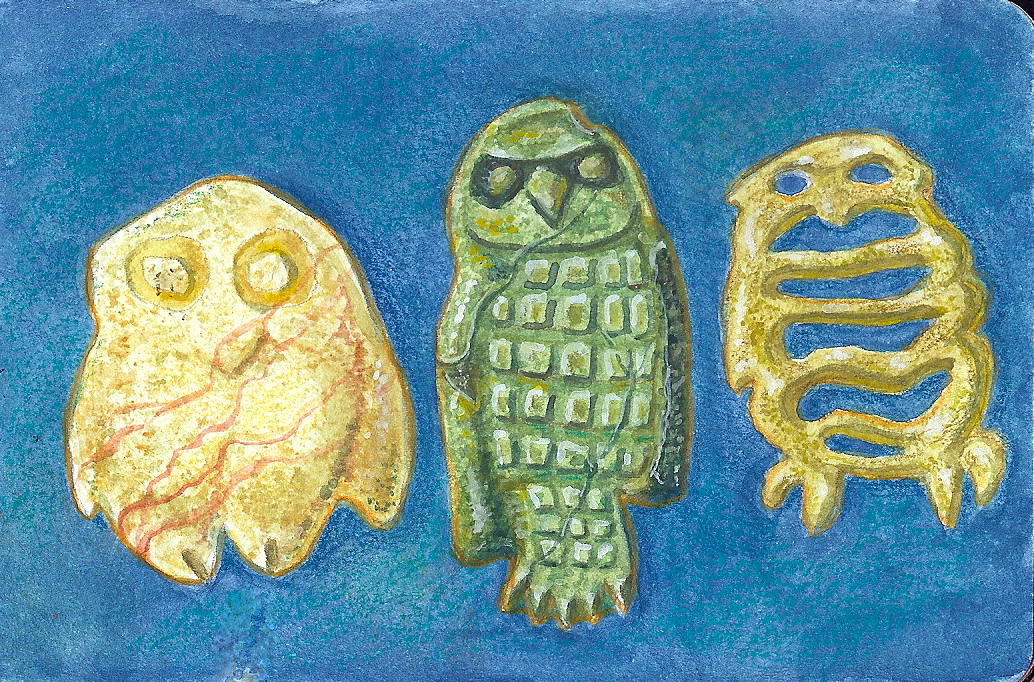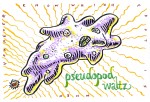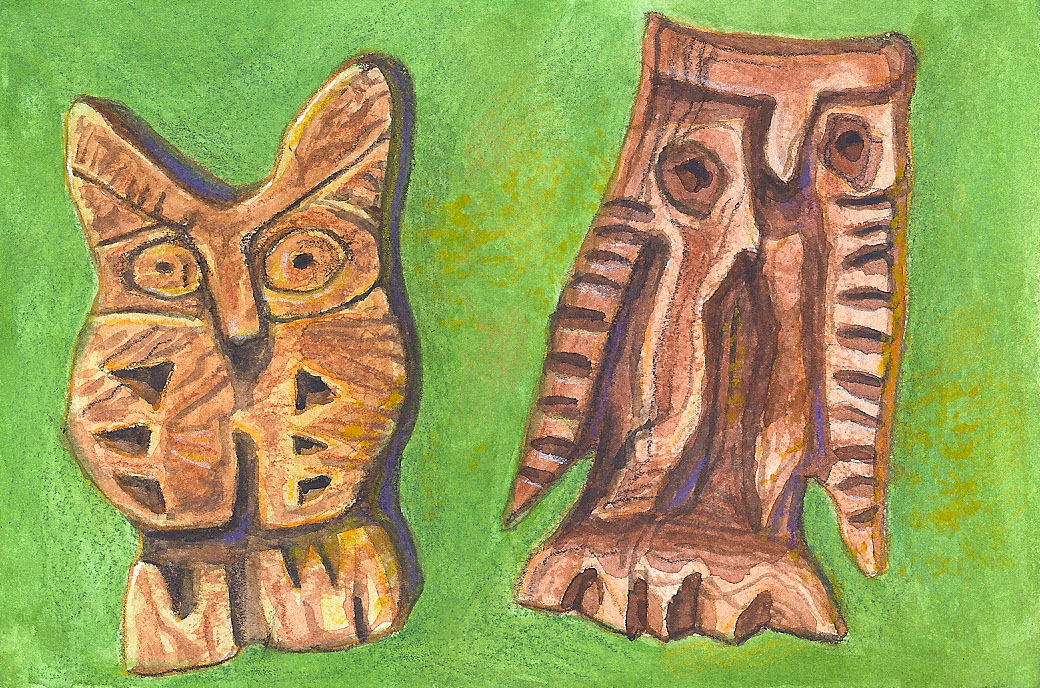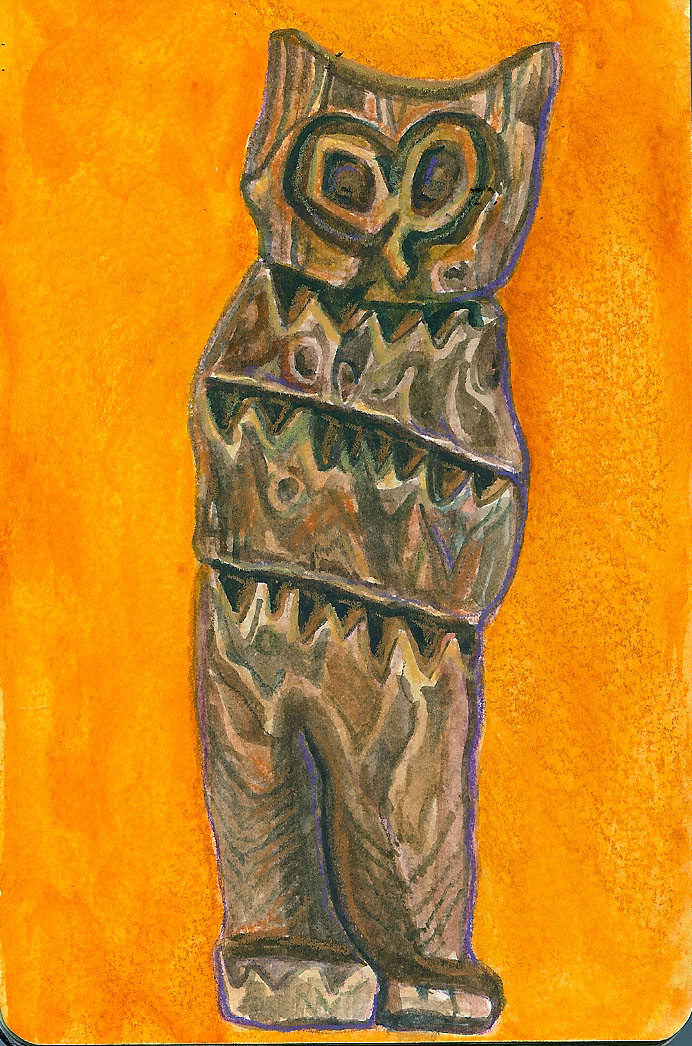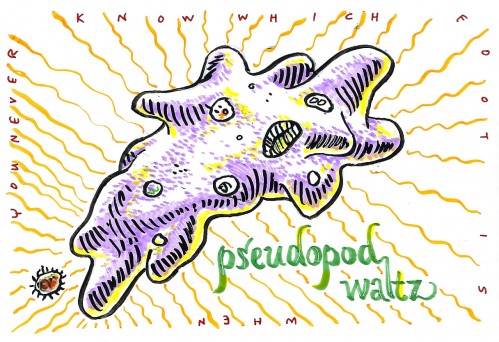Festival of Desert Doves: the Other Collared Dove
The Eurasian Collared Dove (Streptopelia decaocto) has an agenda well-befitting a Columbid: “Must Colonize New World.”
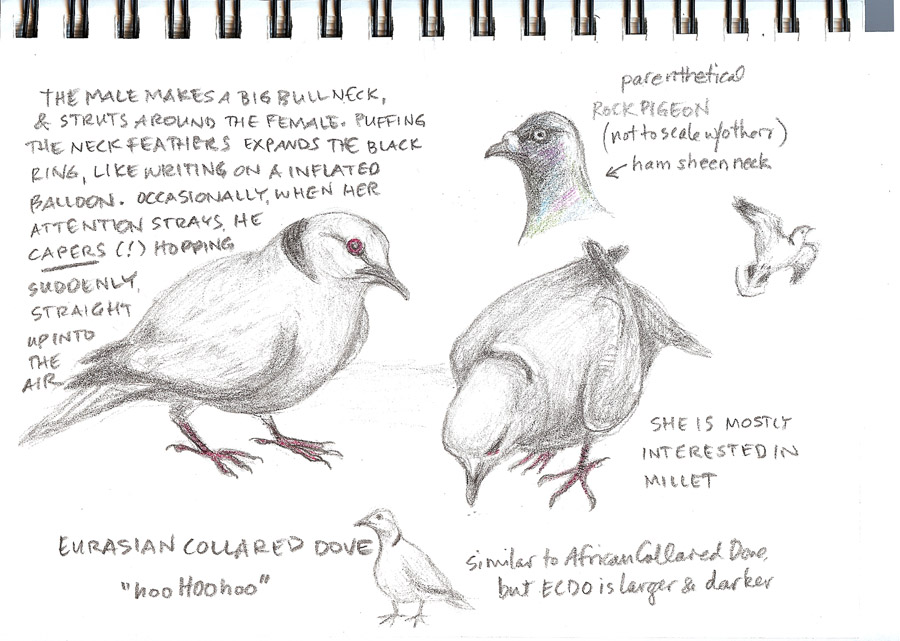 Actually, it started before that, and a lot farther east: a native of central Asia, the Collared Dove had populated Europe as far west as Great Britain by the 1950s. By the early ’80s, a population had taken hold in Florida, likely coming from the Bahamas where they also had been introduced (or escaped captivity) in the 1970s. From there, the large doves filled the southeastern US, and have been spreading inexorably west and north. The first documented report of the species in the state of Arizona was in Eager, AZ, on March 6, 2000, and they were regularly sighted in Maricopa County by the end of the same year.
Actually, it started before that, and a lot farther east: a native of central Asia, the Collared Dove had populated Europe as far west as Great Britain by the 1950s. By the early ’80s, a population had taken hold in Florida, likely coming from the Bahamas where they also had been introduced (or escaped captivity) in the 1970s. From there, the large doves filled the southeastern US, and have been spreading inexorably west and north. The first documented report of the species in the state of Arizona was in Eager, AZ, on March 6, 2000, and they were regularly sighted in Maricopa County by the end of the same year.
As mentioned in a previous post, they’re quite similar to the African Collared Dove (which used to be called the Ringed Turtle Dove), but they’re bigger, and a darker beige, and have different vocalizations. In the Phoenix area and over much of Arizona, Eurasian Collared Doves have become quite numerous — on some days I would ungenerously call them a pest in our yard — and a few theories exist as to why they’ve spread so rapidly. One is that they fill a niche left empty by the extinction of the Passenger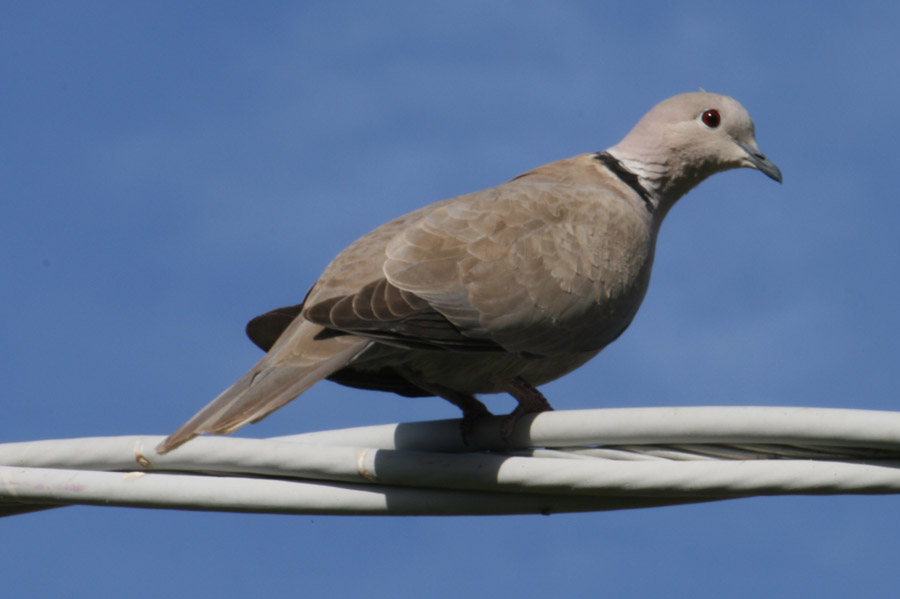 Pigeon (Perhaps in the Northeast U.S., but I’m not so sure that applies to the desert regions?).
Pigeon (Perhaps in the Northeast U.S., but I’m not so sure that applies to the desert regions?).
Like the African Collared Doves, they show a disturbing willingness to become tame, and quickly learn to fly down to empty feeders when they see someone coming out with a bag of birdseed. I’ve caught them lurking on top of my studio — their toenails clicking on the roof, their pink foot skin glowing hazily through the translucent plexi panels — as if lobbying for the filling of neglected feeders in a kind of inexorable zombie-like way. They’re hard to miss since their arrival is a dry noisy wing flapping, the thump of a hard landing of a big heavily-wingloaded airship, and the inevitable repetitive hoo-ing and gibbering that follows.
(Images: pencil sketchbook drawing and photo by A.Shock)

